Perennials That Bloom All Summer – Low Growing Groundcovers
The choicest low growing perennials adorn your garden with happy blooms all summer long. These include Garden phlox, Lavender, Stella de Oro, Day Lilly, Primrose, etc. to name a few.
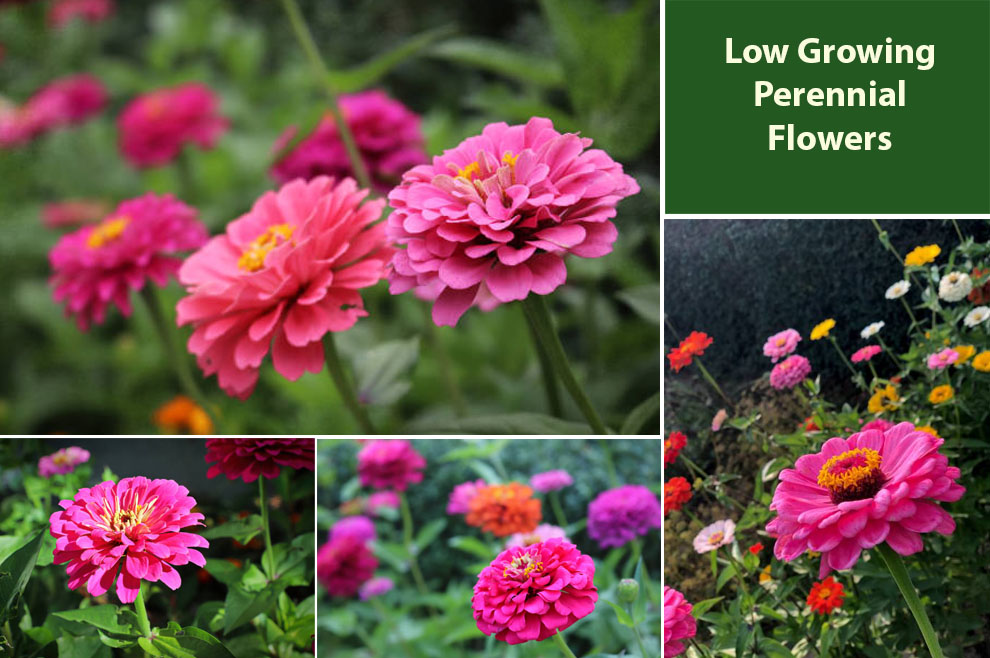
Looking for a guaranteed way to add some aesthetic beauty, color and glamor to your garden? Perennials are your sure-shot way.
Low growing perennials are ornamental plants that mostly gain a maximum height of 6 to 24 inches. These plants make for best edging plants along a walkway, at the front of the garden or at the edge of a border garden.
Some of the popular options include mini hostas, creeping phlox, catmint, perennial geranium, fairy primrose, blue star creeper and so on.
Low growing perennials that bloom all summer can accentuate your walkways and pathways and give a makeover to your outdoors. They add dimension and depth to your space. When you add short flowers, your garden borders shine out and become the eye-catcher at the forefront of your garden.
These short plants are excellent to be planted between and around taller plants to give a fuller appearance to the space and also to close any unattractive gaps in your landscape.
They also keep the weeds out. So, if you want to know more about these perennials and where to plant them, keep scrolling.
What Is A Low Growing Flowering Perennial?
A low growing flowering perennial is easy to care for ornamental plant that has a relatively short height and produces flowers regularly round-the-year. For instance:
- Garden phlox
- Lavender
- Stella de Oro
- Day Lilly
- Primrose
- Perennial Geranium
- Purple coneflower
- Yarrow
- Sun Rose
- Ice plant
- Bluestar
- Black Eyed Susan
- Catmint
They are usually planted along pathways, at the front of flower beds, and front perimeter of border gardens. These plants typically grow low to the ground and will come back year after year, unlike annual plants that bloom just once a year.
Low Perennials That Bloom All Summer – Choose From These Gorgeous Flowers For Your Garden!
Some popular examples of low growing flowering perennials include Creeping Phlox, which produces a carpet of small, brightly colored flowers, Ajuga, which is often used as a ground cover and has spikes of blue or purple flowers.
Another is Vinca, which has glossy, evergreen foliage and produces a profusion of blue or purple flowers.
These plants are great for adding color and texture to gardens without taking up too much space. Then there are Sedum, Lamb’s Ears and other dwarf ornamental grasses that are great as edging plants for the front of the garden.
They look gorgeous for months on and on. There are countless low growing bloom options available.
Here are a few best of them:
1. Garden Phlox
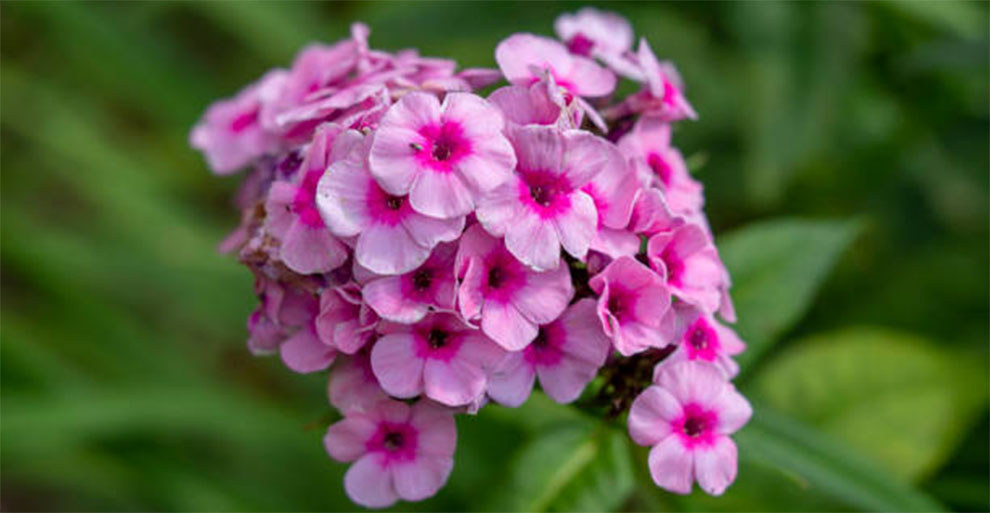
Garden Phlox typically blooms in the summer. It prefers full sun but can also tolerate partial shade. Garden phlox produces clusters of fragrant colorful flowers. These perennials are a great addition to any cottage or border garden.
It’s a great option for adding height and color to a garden bed and its sweet fragrance makes it a perfect choice for a sensory garden. Additionally, it can be planted in mass or as a specimen plant.
2. Lavender
Lavender is a plant species of the genus Lavandula. It is known for its fragrant flowers and essential oil, which is often used in aromatherapy and perfumes. It is used in landscaping as it works great as a border plant and it loves well-draining soil.
The dried flowers are sometimes used in sachets or potpourri. The flowers of some species of lavender are also edible. These are low flowers that bloom all summer.
3. Stella de Oro
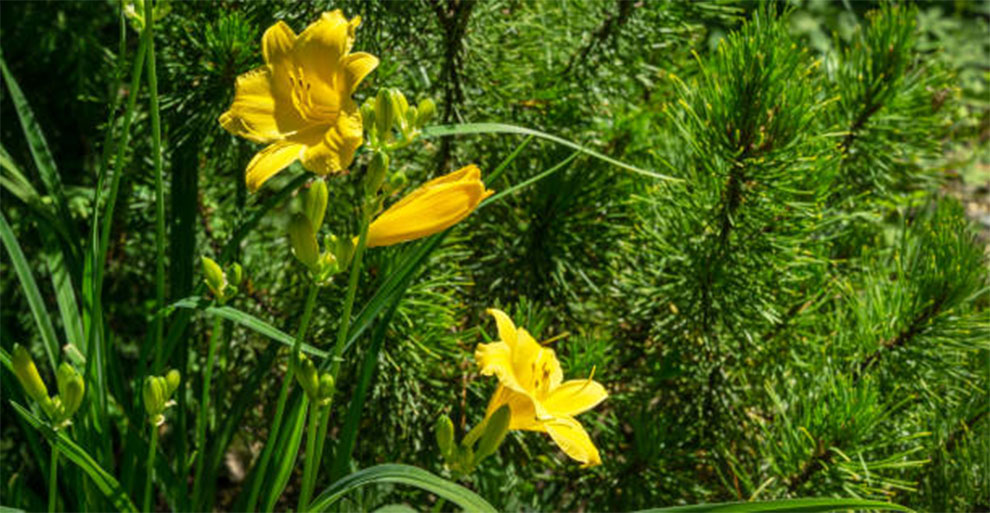
Stella de Oro is a cultivar of Daylily (Hemerocallis) known for its compact size and long blooming period. It is a hardy perennial that can grow to about 12 inches tall and 18 inches wide.
The plant is known for its bright yellow flowers that bloom from mid-summer to fall. They are also easy to grow, drought tolerant, and resistant to most pests and diseases.
4. Day Lilly
Daylilies (Hemerocallis) are known for their large, showy flowers that bloom for one day, hence the name “daylily.” The flowers come in yellow, orange, red, pink, and purple, and they can be single or double blooms.
Daylilies are easy to grow and care for. They are also deer and rabbit resistant. They are popular in landscaping, and can also be used as cut flowers.
5. Primrose
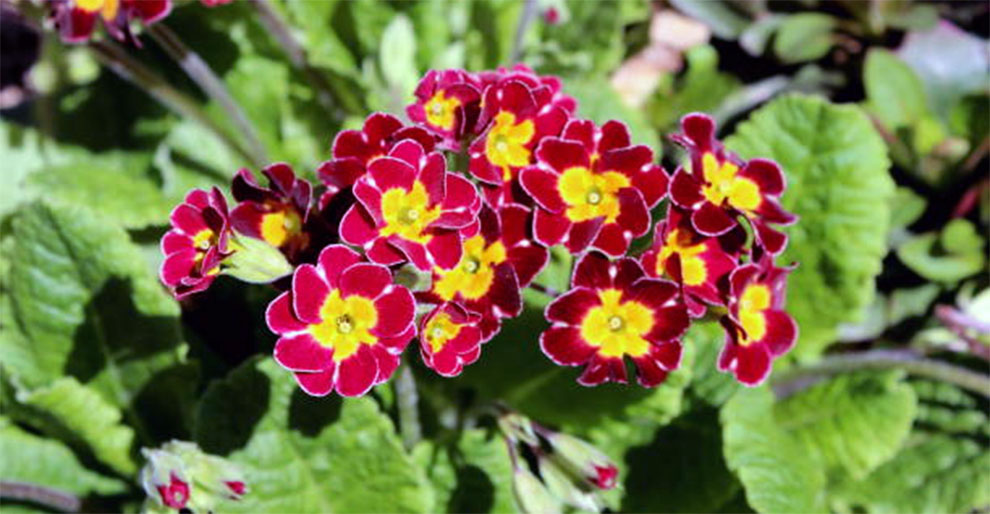
Primrose (Primula) is a genus of plants known for their beautiful, colorful flowers that come in a wide range of shades including pink, yellow, red, and purple. The flowers are often bell-shaped or cup-shaped and are borne on tall stems.
These plants prefer cool, moist conditions and part shade. They can be grown in the garden in well-drained soil or pots and window boxes.
6. Perennial Geranium
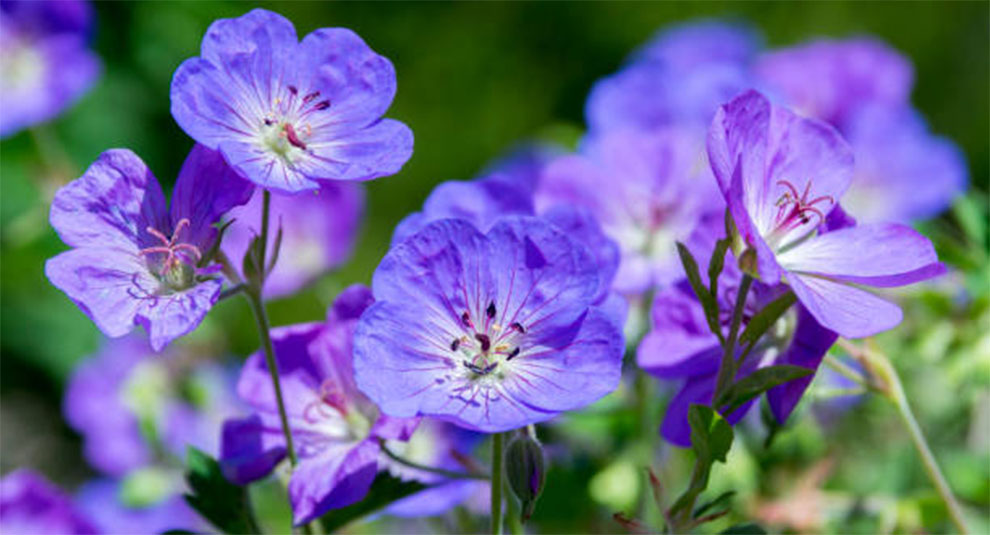
Perennial Geranium, also known as Cranesbill Geranium, is known for its beautiful, showy flowers that come in pink, purple, blue, and white. They are also known for their attractive foliage.
They are hardy, low-maintenance plants that grow well in well-drained soil and full sun to part shade. They bloom from late spring to early summer and sometimes even into early fall. They are suitable for borders, rock gardens, and ground covers.
7. Purple Coneflower
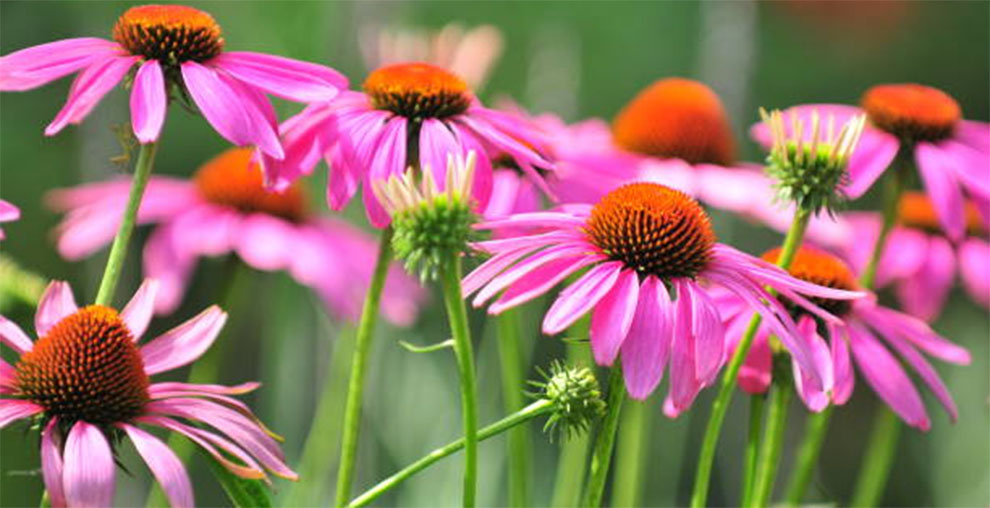
Purple Coneflower is a perennial wildflower known for its large, showy, daisy-like flowers that have a raised central cone and drooping petals in purple or pink. The flowers typically bloom from mid-summer to fall.
Purple coneflower is a hardy plant that can tolerate a wide range of growing conditions, including poor soils and drought. They grow well in full sun to part shade.
Related: How to grow coneflowers? |Coneflower winter care
8. Yarrow
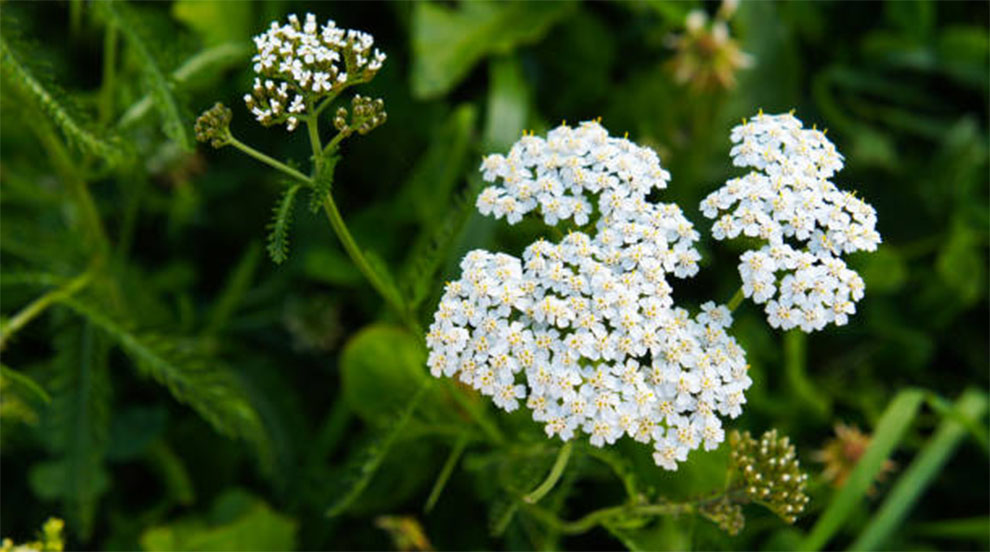
Yarrow is a perennial herb that originates from Europe and Asia. It has feathery leaves and small white or pink flowers that grow in clusters. The plant is said to have anti-inflammatory and astringent properties.
It is also used as a herbal remedy to help reduce fever, stop bleeding, and promote wound healing. In addition, the yarrow is often used as an ornamental plant in gardens.
9. Sun Rose
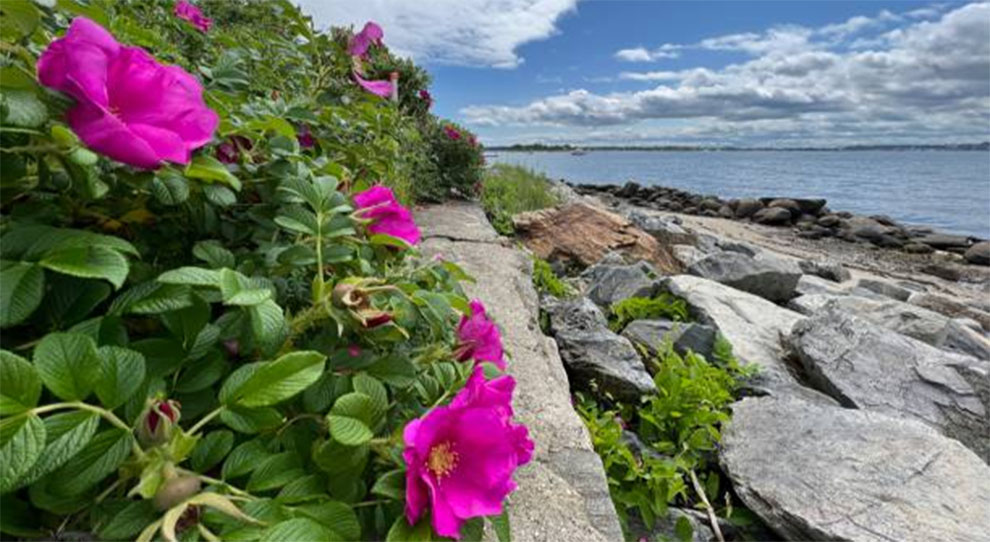
A Sun Rose also called rock rose is a type of flowering plant that is native to Mediterranean regions. They are drought-tolerant and typically grow in rocky or sandy soils.
The flowers of a rock rose come in a variety of colors, including pink, orange, and yellow. They are also known as Cistus. They are suitable for rock gardens, mixed borders, or naturalized areas.
10. Ice Plant
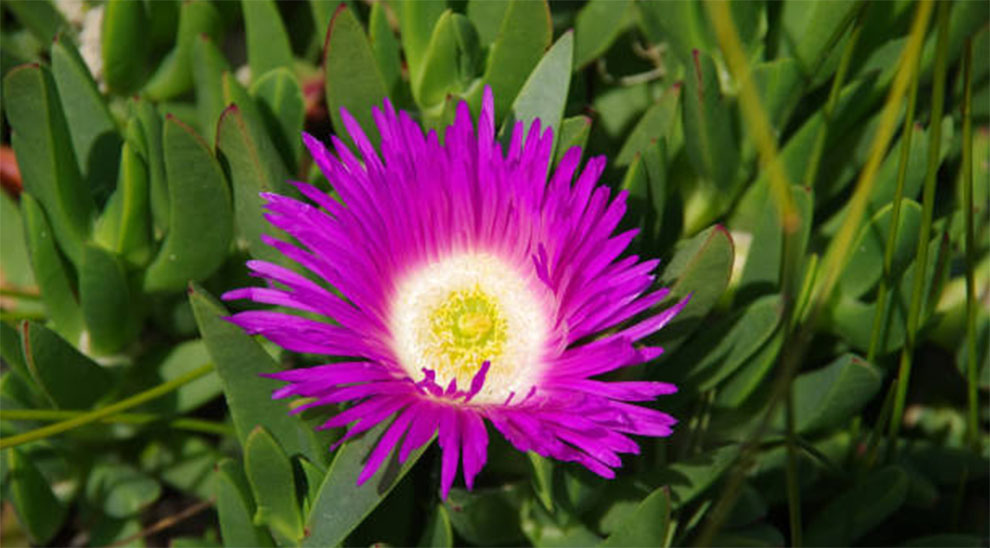
Ice Plant refers to a group of succulent plants native to the coastal regions of southern Africa. They are known for their thick, fleshy leaves that are covered in a powdery, white substance that gives the appearance of frost or ice. There are many plants with white flowers, check’em out here.
These low growing perennial flowers that bloom all summer are commonly used as a ground cover, in rock gardens, and as a drought-tolerant alternative to grass in landscaping.
11. Blue Star
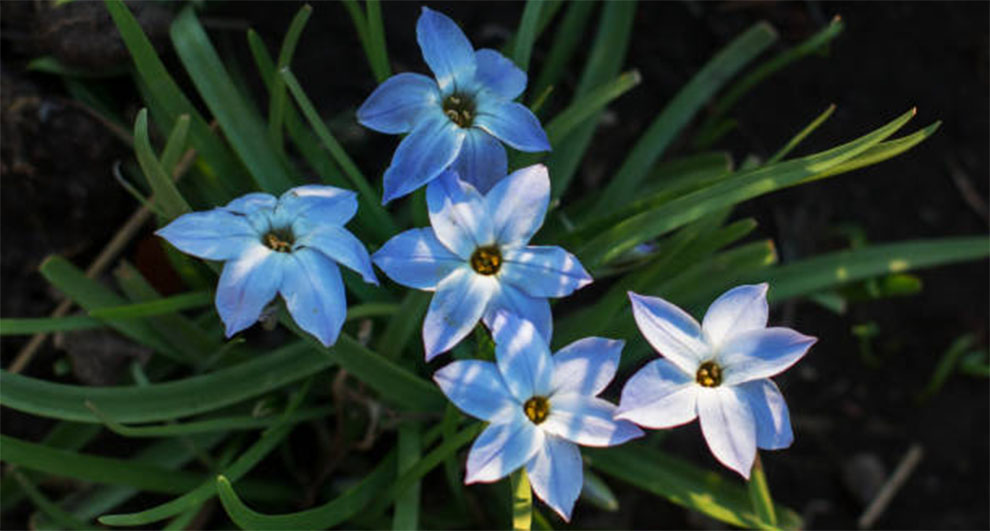
Amsonia tabernaemontana, commonly known as blue star, is a herbaceous perennial plant known for its blue, star-shaped flowers that bloom in the spring and its fine-textured, green leaves that turn yellow in the fall.
It prefers well-drained, moist soil and partial to full sun. It is a great choice for naturalizing, mass planting, and as a background plant in a perennial border.
12. Black-eyed Susan
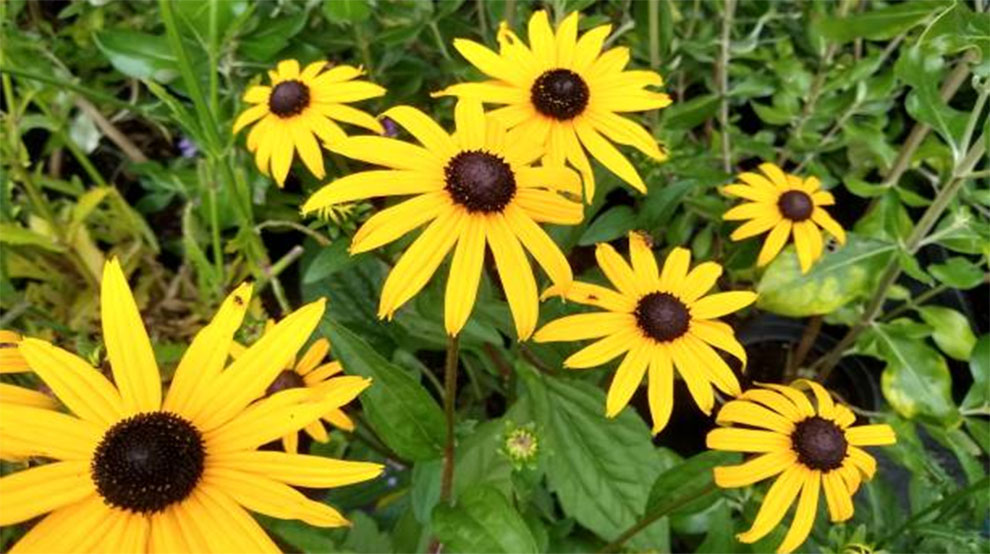
Black-eyed Susan is a flowering perennial plant native to North America. It is known for its bright yellow flowers that have a dark brown or black center giving the plant its name.
The flowers bloom from mid-summer to fall. It prefers full sun and well-drained soil and can tolerate a variety of growing conditions. Black-eyed Susan is a popular choice for wildflower gardens, meadows, and as a cut flower.
13. Catmint
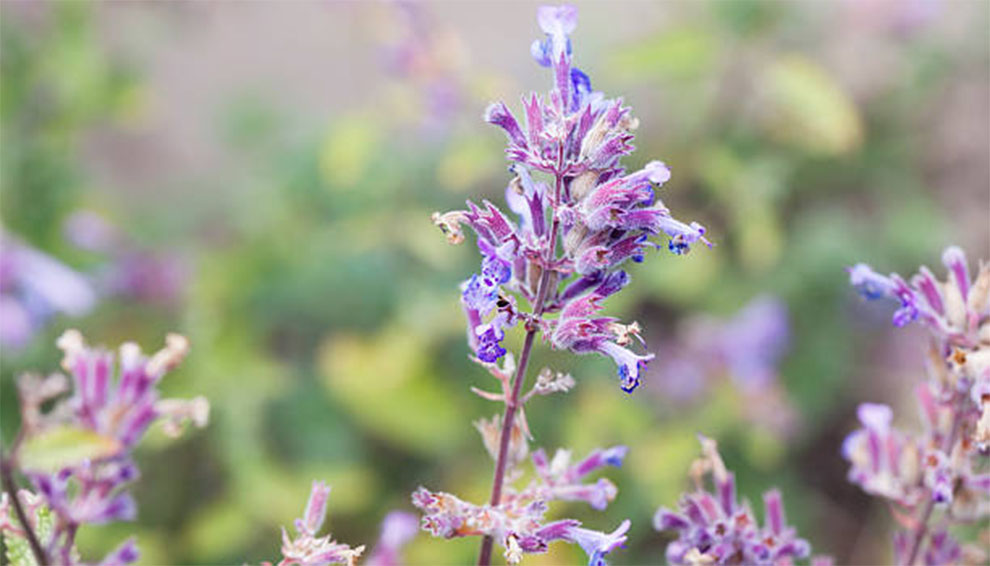
Catmint, also known as Nepeta, is a perennial herb that is known for its fragrant, gray-green leaves and its spikes of lavender or blue flowers. It is a low-growing plant that typically reaches heights of 1-2 feet and blooms from late spring to early fall.
It prefers full sun to partial shade and well-drained soil and is drought tolerant. It is used in cottage gardens, herb gardens, and as a border plant.
Related: Time taken by flowers to grow and bloom
Low Growing Perennial Border Plants
Some of the perennials that are best for border plants are:
A. Autumn Fern
Autumn Fern is a perennial evergreen fern known for its bright bronze-red fronds that emerge in spring and remain vibrant throughout the growing season, changing to a dark green color in winter.
It typically grows to be 1-2 feet tall and 2-3 feet wide and prefers moist, well-drained soil and partial to full shade. It is a great choice for shady gardens and as a perennial ground cover that flowers all summer.
B. Coral Bells
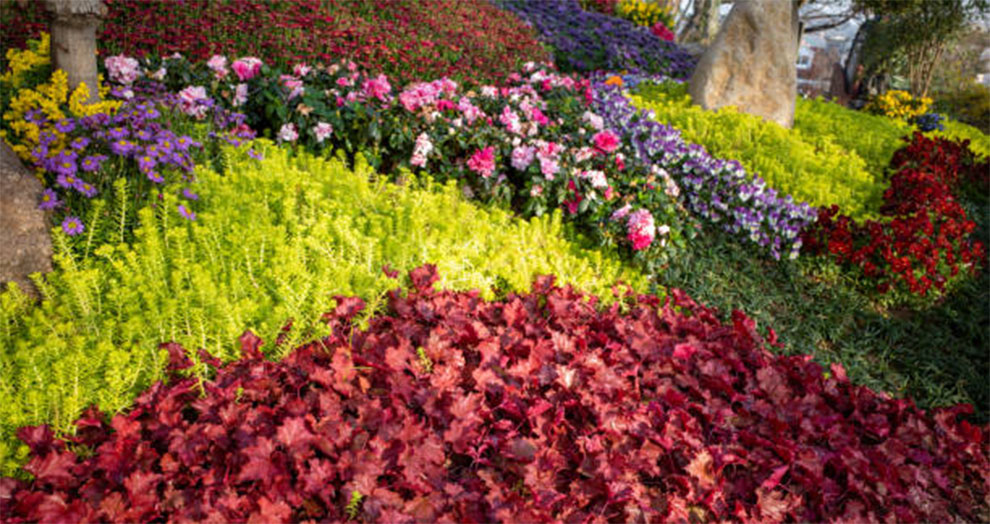
Coral Bells is a perennial plant known for its colorful foliage in shades of red, pink, purple, and orange. The plant typically grows to be 1-2 feet tall and wide and produces small, delicate white or pink flowers on tall spikes in spring or summer.
They like moist, well-drained soil, and partial to full shade. These plants are great for adding color to shaded garden beds or as border plants.
C. Blanket Flower
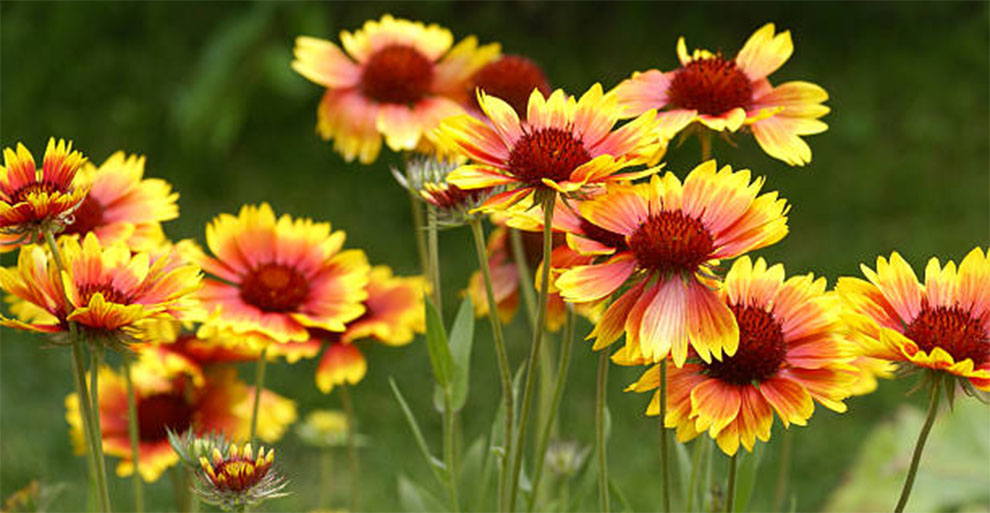
The Blanket Flower (Gaillardia x grandiflora) is a perennial wildflower known for its bright, showy flowers in shades of orange, red, yellow, and gold. The flowers are usually 2-3 inches in diameter and have a daisy-like appearance.
The blanket flower is a hardy, drought-tolerant plant that can grow up to 2 feet tall. It is often used in landscaping and as a cut flower.
D. Cala Lilly
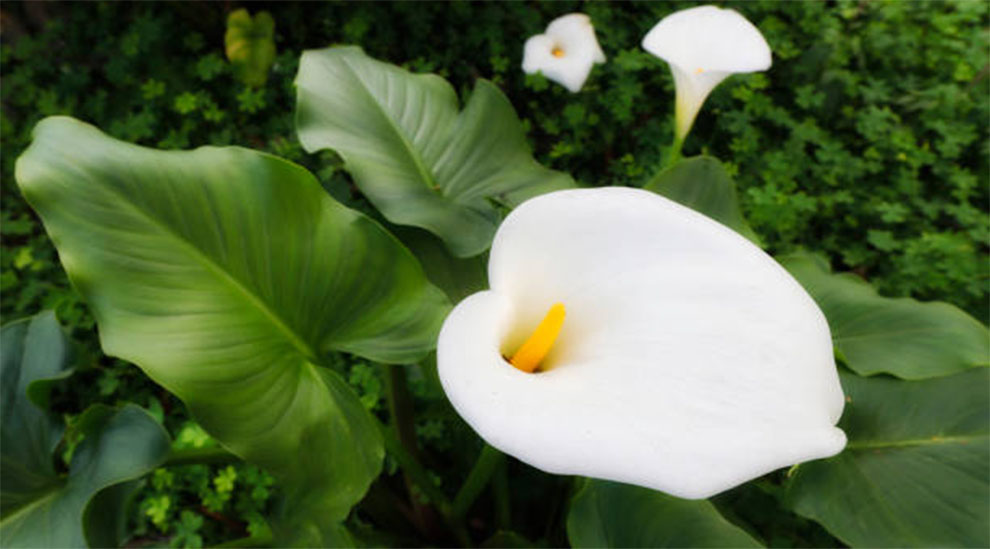
The Calla lily (Zantedeschia aethiopica) is a perennial flowering plant known for its large, showy flowers that come in a variety of colors including white, yellow, pink, and red. The flowers are trumpet-shaped and are typically 3-6 inches in diameter.
The leaves are large and glossy, and the plant can grow up to 3 feet tall. Calla lilies are often used in cut flower arrangements and as ornamental plants in gardens.
Related: How to grow Calla Lilies?|Best Calla Lily fertilizers
E. Bearberry
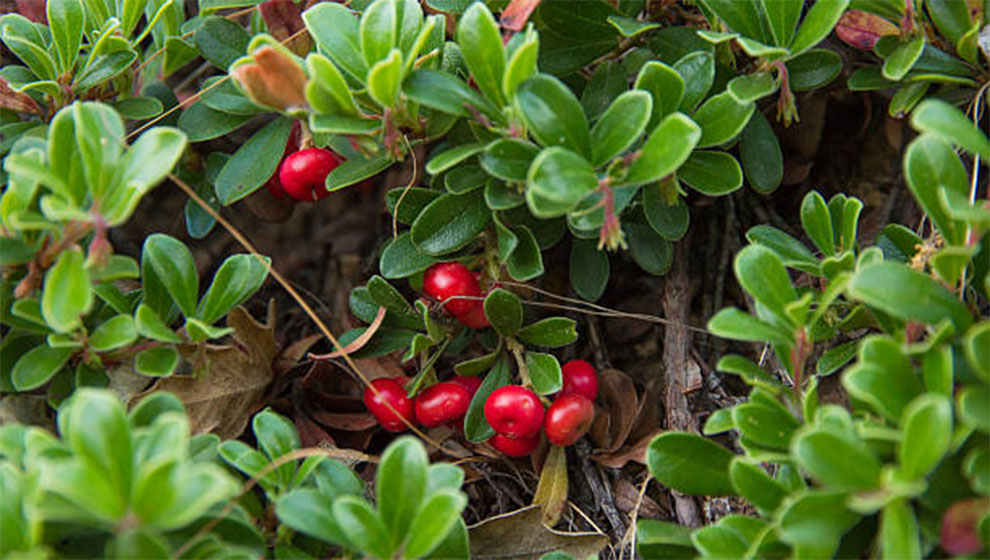
Bearberry is a low-growing evergreen shrub known for its small, urn-shaped pink or white flowers that appear in the spring, followed by bright red berries. The leaves are small, glossy and dark green.
The plant can grow up to 1 meter wide. Bearberry is often used as ground cover and is also used for erosion control on slopes. It prefers well-drained, acidic soils and full sun to partial shade.
F. Toad Lilly
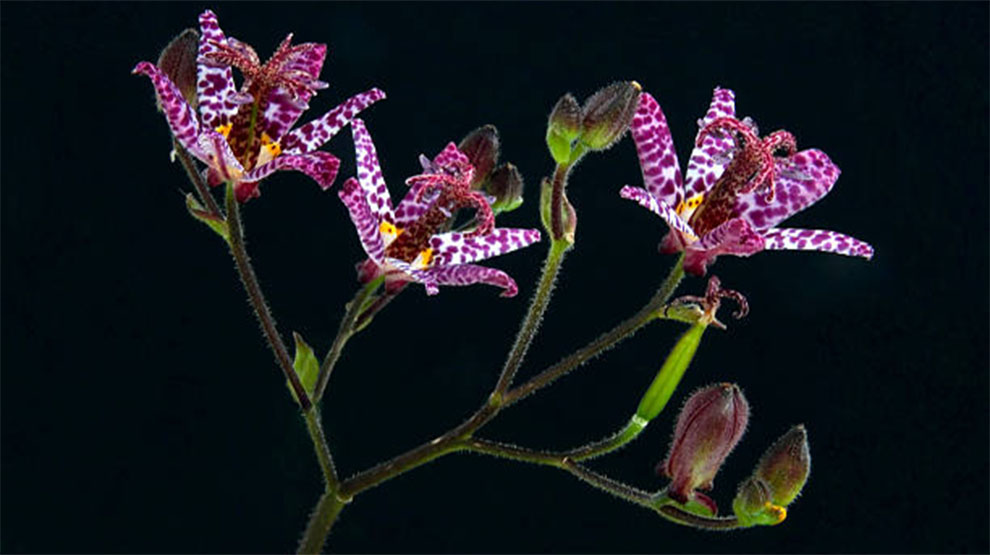
Toad lily is a perennial flowering plant known for its large, showy flowers in shades of white, pink, and purple. The flowers resemble those of orchids and have a speckled appearance. The leaves are green and heart-shaped.
The plant can grow up to 3 feet tall. Toad lilies are often used in shade gardens and as cut flowers. They prefer moist, well-drained soils and partial to full shade.
G. Japanese Aster
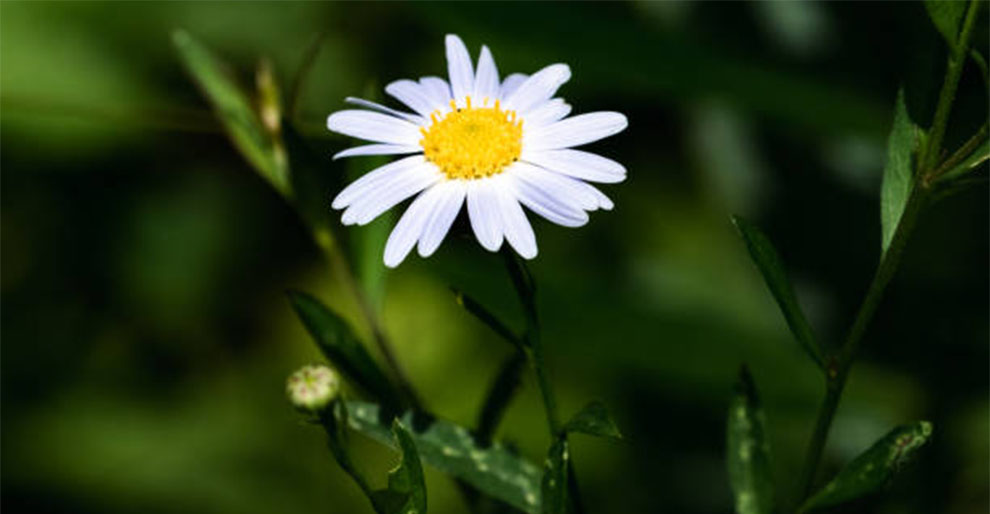
Japanese Aster is a perennial flowering plant that is native to Japan and China. The flowers are daisy-like, with a yellow center and petals arranged in a symmetrical pattern. The leaves are green and glossy.
Japanese Asters are often used in gardens and as cut flowers. They prefer full sun and well-drained soil. They are also drought-tolerant and can tolerate heat and humidity.
What Is The Best Place To Plant Low Growing Perennial Flowers That Bloom All
Summer?
The best place to plant low-growing perennial flowers that bloom all summer would be an area that receives full sun to partial shade. The area should have well-drained soil and consistent moisture.
If you are planting in an area that gets a lot of sun, you may need to provide some shade during the hottest parts of the day.
Some low growing summer blooming perennials include:
- Blanket flower (Gaillardia x grandiflora)
- Bearberry (Arctostaphylos uva-ursi)
- Toad lily (Tricyrtis hirta)
- Japanese Aster (Kalimeris incisa)
- Coreopsis (Coreopsis spp.)
- Sedum (Sedum spp.)
- Black-eyed Susan (Rudbeckia spp.)
- Yarrow (Achillea spp.)
It’s important to note that the best flower options may depend on the specific climate and conditions in your area. It’s always recommended to consult with a local nursery or gardening expert to find out which plants are best suited for your region.
Another factor could be the kind of flower you want, rare, exotic, low maintenance and so on.
Related: Trees that bloom in winter | Flowers for Florida summer heat
Low-Growing Perennials Full Sun and Shade Information
Q. What is the prettiest perennial?
Ans. Many perennials are considered to be beautiful, so it is difficult to say which one is the prettiest. Some popular options include the peony, the lily, the daylily, the coneflower, the black-eyed Susan, and the Shasta daisy.
Ultimately, the prettiest perennial will depend on personal taste and the specific growing conditions in your garden.
Q. What are the smallest perennials?
Ans. There are many perennials that are small in size such as:
- Alpine rock cress
- Creeping phlox
- Moss phlox
- Stonecrop
- Elfin thyme
- Fairy primrose
- Golden dwarf iris
- Snow-in-summer
- Blue star creeper
- Glacier Ivy
These perennials typically grow to be less than 6 inches in height and spread. They are ideal for rock gardens, ground covers, and borders.
Q. What is the easiest perennial to take care of?
Ans. Several perennials are known for being easy to take care of such as Sedum, Phlox, Shasta Daisy, Echinacea (Coneflower) and Perennial Salvia.
Q. What is the longest-blooming perennial?
Ans. Several perennials are known for their long blooming period. Some of the longest-blooming perennials include Salvia, Coneflower, Shasta Daisy, Black-eyed Susan and Sedum.
Q. What flowers bloom all summer in the shade?
Ans. Some low growing perennials that bloom all summer in the shade include Impatiens, Begonias, Coleus, Fuchsia, and Torenia.
